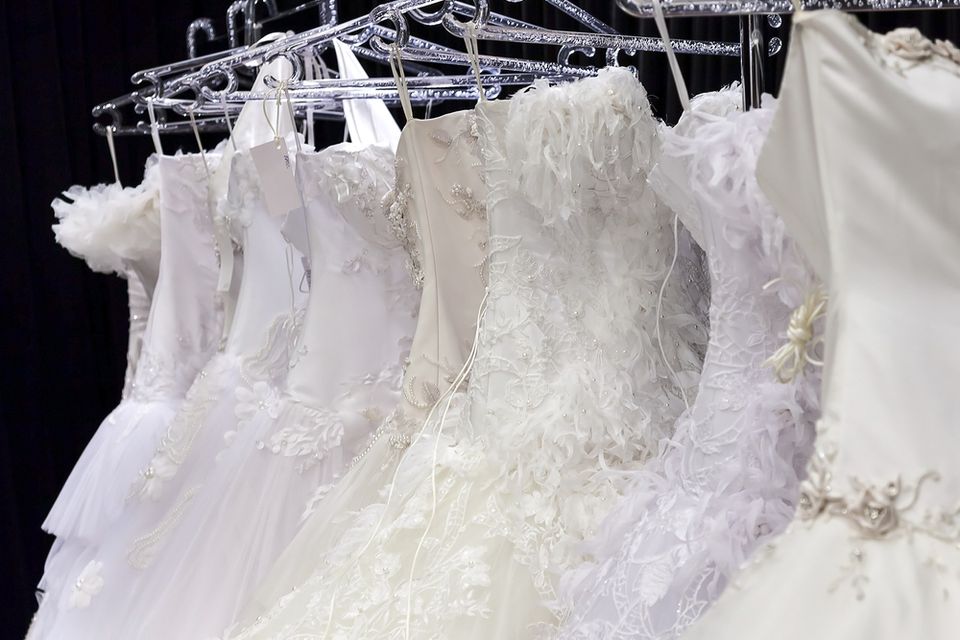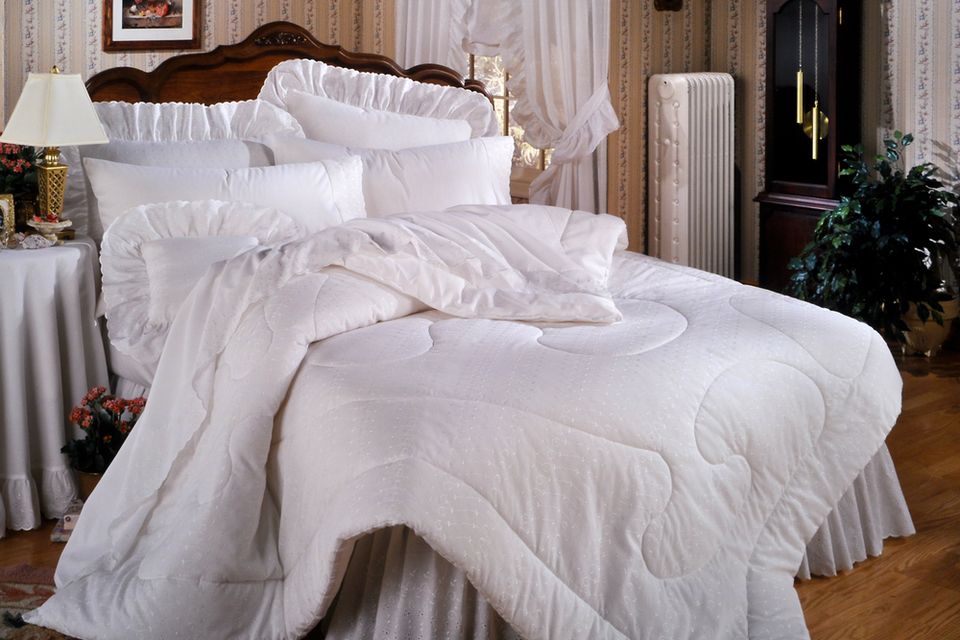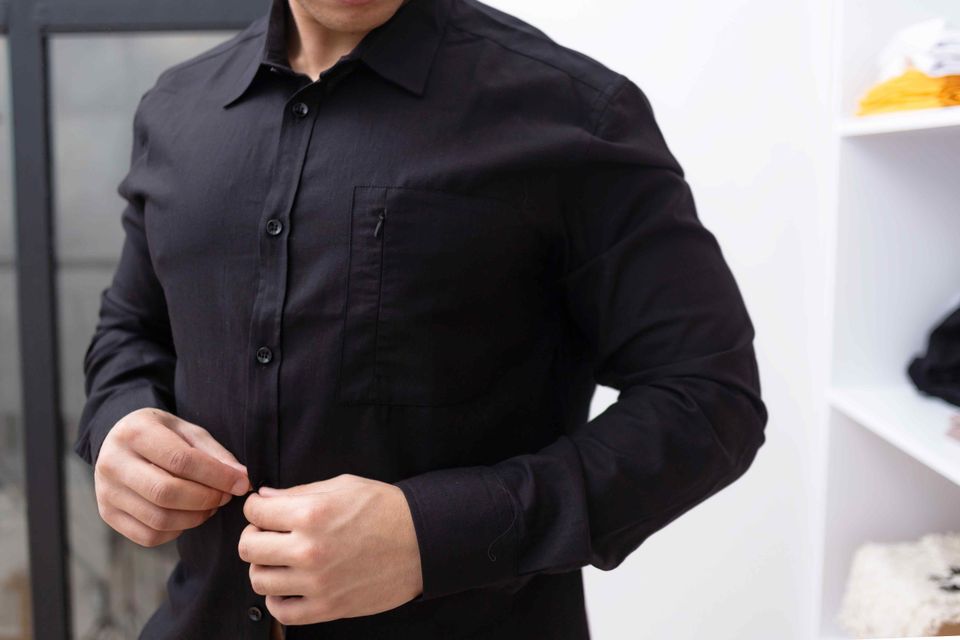
How to store and preserve your wedding gown
The Honeymoon Is Over….Storing Your Wedding Gown
The bouquet you tossed has been drying on your second cousin’s windowsill for a week, almost all of the rice has been vacuumed from the threshold rug of your new home, and the photographer called to say your album is ready. Now is the time to do something with that gorgeous dress that you hope to hand down some day to a daughter and you want it to look as good on her as it did on you.
Want to take the guess work out of preserving your investment?
1. First and foremost, have your dress cleaned by a professional that knows what to do! Even though it looks clean you have perspired and someone may have spilled wine on your skirt. Use an acid neutral box and tissue after cleaning to have close to museum quality storage for your keepsake.
2. When you take your gown home, store it in a cool, dry place. Do not store it in a basement or attic. Attic heat could promote yellowing of the fabric. The dampness in a basement could cause the growth of mildew.
3. If you are storing a long gown on a hanger, it is a good idea to sew straps to the waistline of the dress to relieve pressure on the shoulders from the weight of the skirt. These straps should be a little shorter than the bodice. Wrap the dress in a protective white sheet or muslin covering.
4. Whether the gown is hung or stored boxed, the bodice should be stuffed with acid neutral white tissue paper to prevent wrinkles.
5. Keep in mind that headpieces and veils are often very fragile. They may deteriorate even in the best of storage conditions.
6. In some cases, decorative trims may yellow because of oxidation of the finishes used. In other cases, an ivory or ecru trim may lose its color and no longer match the gown. This may happen if a dye component is lost in cleaning. Color failures or this type are due to poor colorfastness of the dye selected in dyeing, not to improper dry cleaning.
7. Most fabrics naturally tend to yellow with age. Often this type of yellowing can be overcome if the gown can be carefully cleaned. If your heirloom gown has become discolored, or if your own becomes yellow with age, trust your gown to your International Fabricare Institute dry cleaner. He or she understands restoration of delicate and antique materials.
Protect your memories
Your wedding gown is worth the care and attention you give to its selection and care, both before the wedding and afterwards.
Our professional team of Certified Environmental Drycleaners at Boulder Cleaners is experienced with preserving your keepsakes. Please call us if you need help with any of these important decisions.
In addition to wedding dresses, we can preserve christening gowns, confirmation outfits, quinciera dresses and any outfits that needs to be saved for use by future generations.
Please let us know if you have any suggestions or comments by contacting us at info@bouldercleaners.com
The bouquet you tossed has been drying on your second cousin’s windowsill for a week, almost all of the rice has been vacuumed from the threshold rug of your new home, and the photographer called to say your album is ready. Now is the time to do something with that gorgeous dress that you hope to hand down some day to a daughter and you want it to look as good on her as it did on you.
Want to take the guess work out of preserving your investment?
1. First and foremost, have your dress cleaned by a professional that knows what to do! Even though it looks clean you have perspired and someone may have spilled wine on your skirt. Use an acid neutral box and tissue after cleaning to have close to museum quality storage for your keepsake.
2. When you take your gown home, store it in a cool, dry place. Do not store it in a basement or attic. Attic heat could promote yellowing of the fabric. The dampness in a basement could cause the growth of mildew.
3. If you are storing a long gown on a hanger, it is a good idea to sew straps to the waistline of the dress to relieve pressure on the shoulders from the weight of the skirt. These straps should be a little shorter than the bodice. Wrap the dress in a protective white sheet or muslin covering.
4. Whether the gown is hung or stored boxed, the bodice should be stuffed with acid neutral white tissue paper to prevent wrinkles.
5. Keep in mind that headpieces and veils are often very fragile. They may deteriorate even in the best of storage conditions.
6. In some cases, decorative trims may yellow because of oxidation of the finishes used. In other cases, an ivory or ecru trim may lose its color and no longer match the gown. This may happen if a dye component is lost in cleaning. Color failures or this type are due to poor colorfastness of the dye selected in dyeing, not to improper dry cleaning.
7. Most fabrics naturally tend to yellow with age. Often this type of yellowing can be overcome if the gown can be carefully cleaned. If your heirloom gown has become discolored, or if your own becomes yellow with age, trust your gown to your International Fabricare Institute dry cleaner. He or she understands restoration of delicate and antique materials.
Protect your memories
Your wedding gown is worth the care and attention you give to its selection and care, both before the wedding and afterwards.
Our professional team of Certified Environmental Drycleaners at Boulder Cleaners is experienced with preserving your keepsakes. Please call us if you need help with any of these important decisions.
In addition to wedding dresses, we can preserve christening gowns, confirmation outfits, quinciera dresses and any outfits that needs to be saved for use by future generations.
Please let us know if you have any suggestions or comments by contacting us at info@bouldercleaners.com


